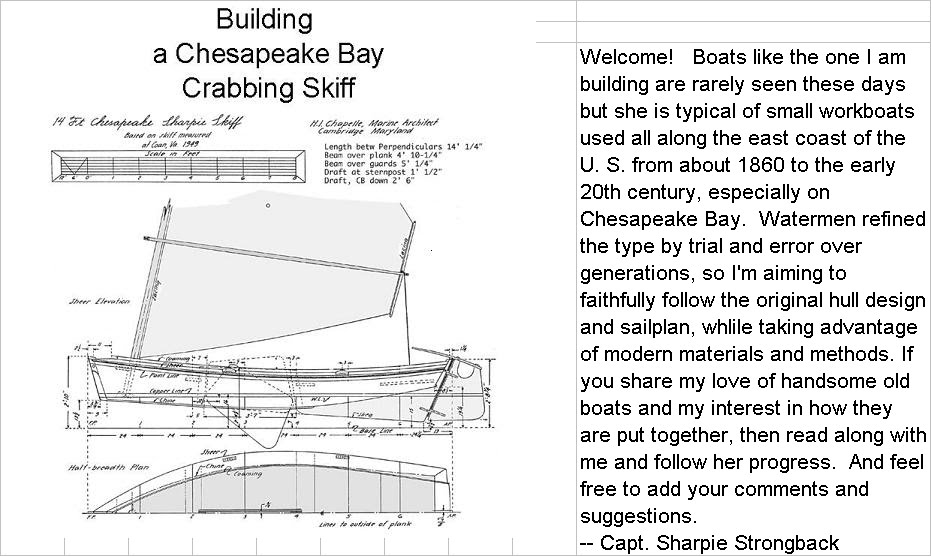.
Saturday, March 20: A milestone day.
I bought a stick of white oak yesterday for the outer stem. Today I planed it down to exactly the right thickness, cut out the stem profile, beveled and sanded it, and screwed it in place. Doesn't sound like much, but consider what tools were used to make a piece just two feet by 3" by 1 3/4": Miter saw, band saw, thickness planer, electric plane, two hand planes, spokeshave, drill press, electric drill, brace and bit, belt sander, and orbital sander. That's not counting measuring tools or hand sanding tools. For all that, the project was straightforward and enjoyable.
The outer stem gives the boat a sturdier appearance in keeping with her workboat heritage. Combined with the inner stem, it makes four to five inches of solid oak out front; in the event of a collision, the other guy will know he has been hit.
I left the top (sheer end) of the stem long, to be trimmed later; I will follow the plans and extend the stem a couple of inches above the deck. I did not epoxy the outer stem on yet, because I want to get it out of the way when I trim the sides to the designed sheer line.
What's the milestone? The building of the outside of the hull is done. Complete. I will give it a sealer coat of epoxy and then find some helpers to turn the boat over and start work on the inside. I am looking forward to seeing what she looks like right side up.
Another subject: I wondered in the last post how boatbuilders can drill a shaft log: a long hole through the length of the keel right through the bottom of the boat to line up exactly with the engine, to take the propeller shaft. It's just an idle thought; thankfully, I won't have to drill such a hole on this boat. But think what a catastrophe it would be if such a hole were crooked by even a fraction of an inch. Well, I looked it up in Chapelle's Boatbuilding. He describes several alternatives to boring a hole, including making two keel pieces join in a line where the shaft should be and cutting a groove in each of the pieces. As to boring a hole, he cautions, "Perhaps the greatest difficulty in making a shaft log by boring is to avoid fouling keel drifts or bolts. The longer the shaft hole, thre greater the difficulty in boring." He shows an illustration of how to bore such a long hole:
It occurred to me that a laser could be used to check the straightness of a long hole. Chapelle goes on to say, "If the bit and its stock are correctly lined up there should be little trouble in getting a true hole." Uh huh, if you say so. Anyway, I'm well satisfied with the small victory of putting 4" screws in the sternpost and stem without getting any of them crooked.
Saturday, March 20, 2010
Subscribe to:
Post Comments (Atom)



No comments:
Post a Comment